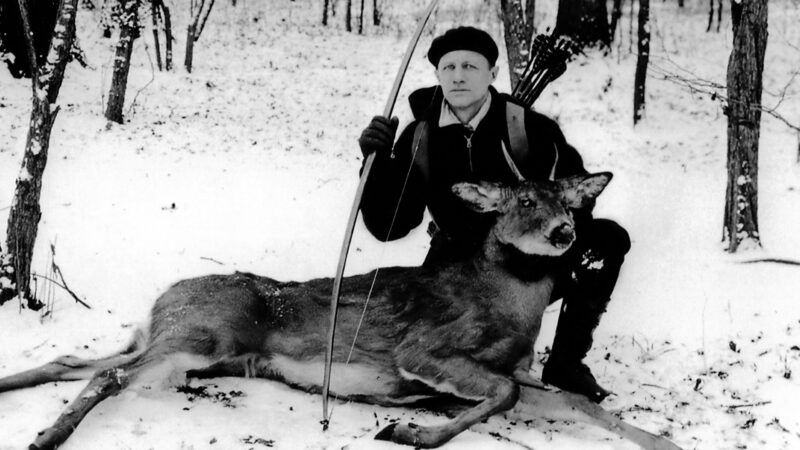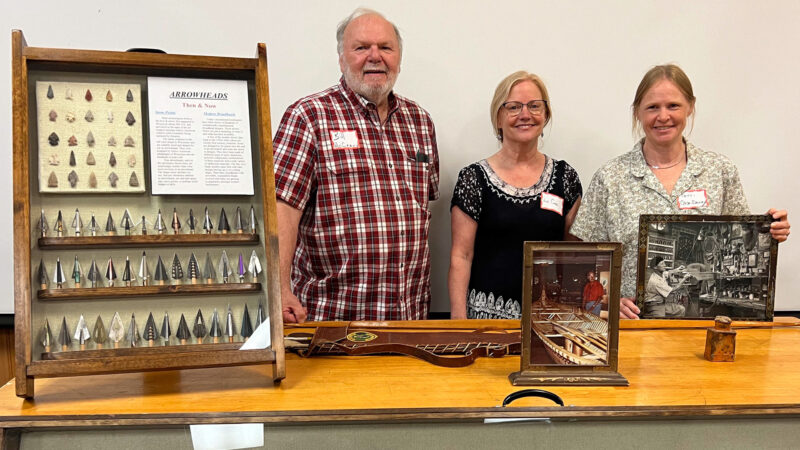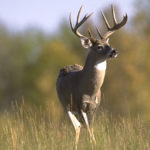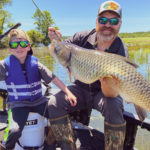Bowhunting historian Bill McCrary says it’s accurate to call Racine’s Roy I. Case (1888-1986) the father of Wisconsin bowhunting and co-founder of the Wisconsin Bowhunters Association.
“Roy Case left his fingerprints on every aspect of archery in Wisconsin during his era,” McCrary said.
But even those acknowledgments probably sell Case short. McCrary, 79, of Madison, says no other bowhunter can equal the impact Case had on archery and bowhunting in Wisconsin the past century.
True, bowhunters nationwide more readily recognize Michigan’s Fred Bear, founder of the Bear Archery Co.; Alabama’s Howard Hill, “the world’s greatest archer;” or Arkansas’ Ben Pearson, the nation’s first mass-manufacturer of bows and arrows.
None of those mid-1900s archery titans, however, released bowhunting’s “shot heard round the world.” In doing so, Case helped legitimize archery gear for big-game hunting nearly 100 years ago.

Case unleashed that historic arrow on Dec. 6, 1930, sending his homemade wooden shaft and steel broadhead through a buck in Vilas County during Wisconsin’s deer season. By state law, guns “held at arms’ length and discharged from the shoulder” were the only legal weapon allowed during the annual deer hunt.
In fact, the gun-only stipulation had been state law since 1851, when Wisconsin established its first deer season: a 7-month hunt opening July 1 and ending January 31. To bowhunt legally in 1930, 79 years later, Case and his bowhunting buddies—Len Stoneman and John Divine—sought, received and carried written permission from Wisconsin’s chief warden, Harley MacKenzie.
Case didn’t squander his opportunity when Divine pushed a deer past him broadside at 15 yards. He didn’t instantly draw his bow, however. He thought the deer was a doe, and only antlered bucks were legal targets. But when the deer spun to leave, Case saw its spike antlers. He pulled his traditional bow’s 54-pound weight to full draw and released, driving his arrow haunch-to-chest through the deer at 20 yards.
The young buck ran 50 yards and dropped “stone-dead” within seconds. Case’s feat marked the first bow-kill of Wisconsin’s modern era, proving that rifles weren’t the only lethal weapon in the state’s deer woods.
“When Harley MacKenzie signed that permission letter for Case, he couldn’t have imagined the hundreds of thousands of Wisconsin bowhunters who would later go afield with bows, the hundreds of thousands of deer they would take, and the thousands of Wisconsin archery shops and bowhunting shops that would sell and service all that equipment,” McCrary said Aug. 3 while addressing the Wisconsin Outdoor Communicators Association’s annual conference at Eagle River’s Trees for Tomorrow education center.

Unforeseen Growth
Joining McCrary to discuss Case and his legacy was Terri Case-Doney, the fabled bowhunter’s granddaughter. Case-Doney said her grandfather shot archery his entire life, and never switched to compound bows when those technological marvels took over during the 1970s.
Case-Doney and McCrary often marvel how far archery and bowhunting advanced the past century.
“All Harley MacKenzie knew in 1930 was that Case and his friends wanted to try hunting deer with a stick and string,” McCrary said. “MacKenzie had no way of knowing his signature would help launch archery manufacturers like Whiffen Archery in 1931, and help bring Mathews Archery to (Sparta) Wisconsin (in 1995).”
McCrary, 79, has spent much of his life collecting broadheads and documenting Wisconsin’s bowhunting roots. Given the depth and breadth of his research into the state’s 90-year bowhunting heritage, McCrary became an authority on modern-day bowhunting.

To ensure he didn’t take his findings to the grave, McCrary helped create the Wisconsin Bowhunting Heritage Foundation Inc., in 2004 as a nonprofit corporation devoted to preserving Wisconsin’s bowhunting history. The foundation, in turn, created the Wisconsin Bowhunting Hall of Fame in 2011 to honor those who “created, promoted and strengthened bow-and-arrow hunting in Wisconsin.”
The Hall of Fame, located in Clintonville, holds the shoulder mount of Case’s spike buck. Further, it’s one of only two museums in North America devoted to bowhunting and bowhunters. The other is housed at the Bass Pro Shops/Cabela’s “Wonders of Wildlife” complex in Springfield, Missouri, which consolidated materials once housed at the Fred Bear Museum in Gainesville, Florida, and the Pope and Young National Bowhunting Museum in Chatfield, Minnesota.
The Smithsonian Institution in Washington, D.C., also displays bowhunting tackle, but it’s focused more on world bowhunting.
McCrary also wrote two comprehensive books, “The History of Wisconsin Bowhunting” (2016) and “Roy I Case: Wisconsin Bowhunting Legend” (2021). Both books are available through the Wisconsin Bowhunting Heritage Foundation and Museum (https://www.wisconsinbowhunters.org/museum).
The Story Still Told
McCrary said Case, Divide and Stoneman likely celebrated their success long into the night of Dec. 6, 1930, after dragging the buck to Case’s remote Northwoods cabin. Even so, they probably didn’t consider their hunt to be historically significant.
“Roy might have thought that hunt was over; that they’d accomplished what they’d set out to do,” McCrary said. “But I contend that hunt never ended. Roy probably told that story hundreds of times during his lifetime, and many other times in articles by himself and other writers. Here we are 94 years later, still talking about it.”
Even so, Wisconsin’s bowhunting heritage didn’t grow quickly, though Case had help promoting it. Professor Aldo Leopold at the University of Wisconsin-Madison encouraged Case, Otto Wilke of Port Washington and Larry Whiffen of Milwaukee to petition the state to create the nation’s first archery-only deer season.

Wisconsin honored that wish in 1934 with a five-day bowhunt in Sauk and Columbia counties that attracted 40 participants. The season’s lone kill was a buck arrowed by a Chicago bowhunter named Bill Ostlund.
Wisconsin, however, didn’t create a separate archery deer license until 1965. The state sold 63,964 bowhunting licenses that year; 37,347 to resident adults, 19,197 to junior archers and 7,420 to nonresidents. They combined to register 4,995 deer, a 7.8% success rate.
In 2013, a year before crossbows were allowed during Wisconsin’s archery season, the state sold 266,380 bowhunting licenses, and archers registered 87,628 deer, a 33% success rate.
Conclusion
We can’t know for certain what Case would think of crossbows, but based on his view of compound bows, he probably wouldn’t approve.
“Case liked it when people made their own gear,” McCrary said. “He thought making bows and arrows created an intimacy with your gear. You grow close to it. He didn’t care for technological advances that went beyond what you could make in your own workshop.”

 By
By 



